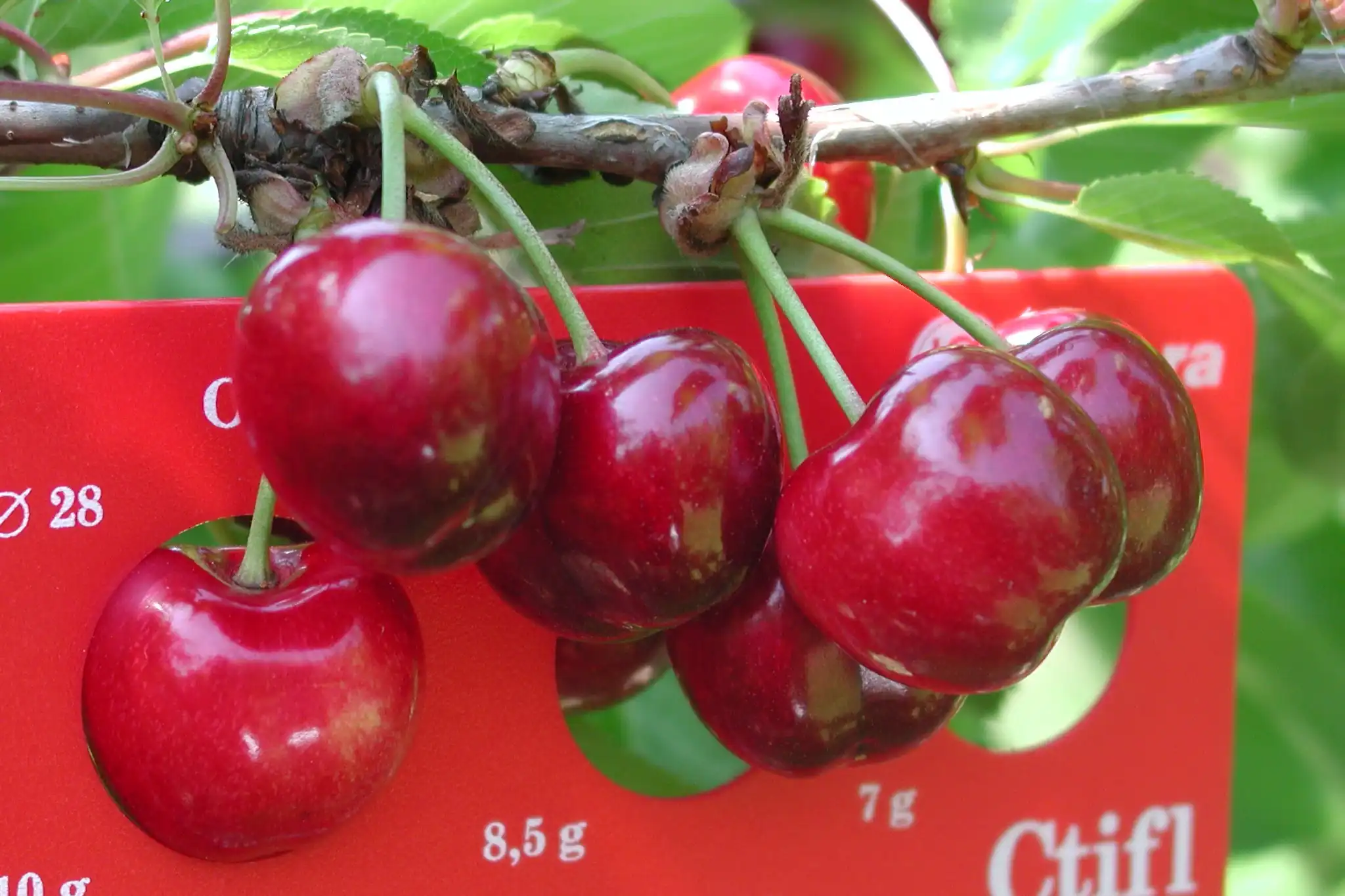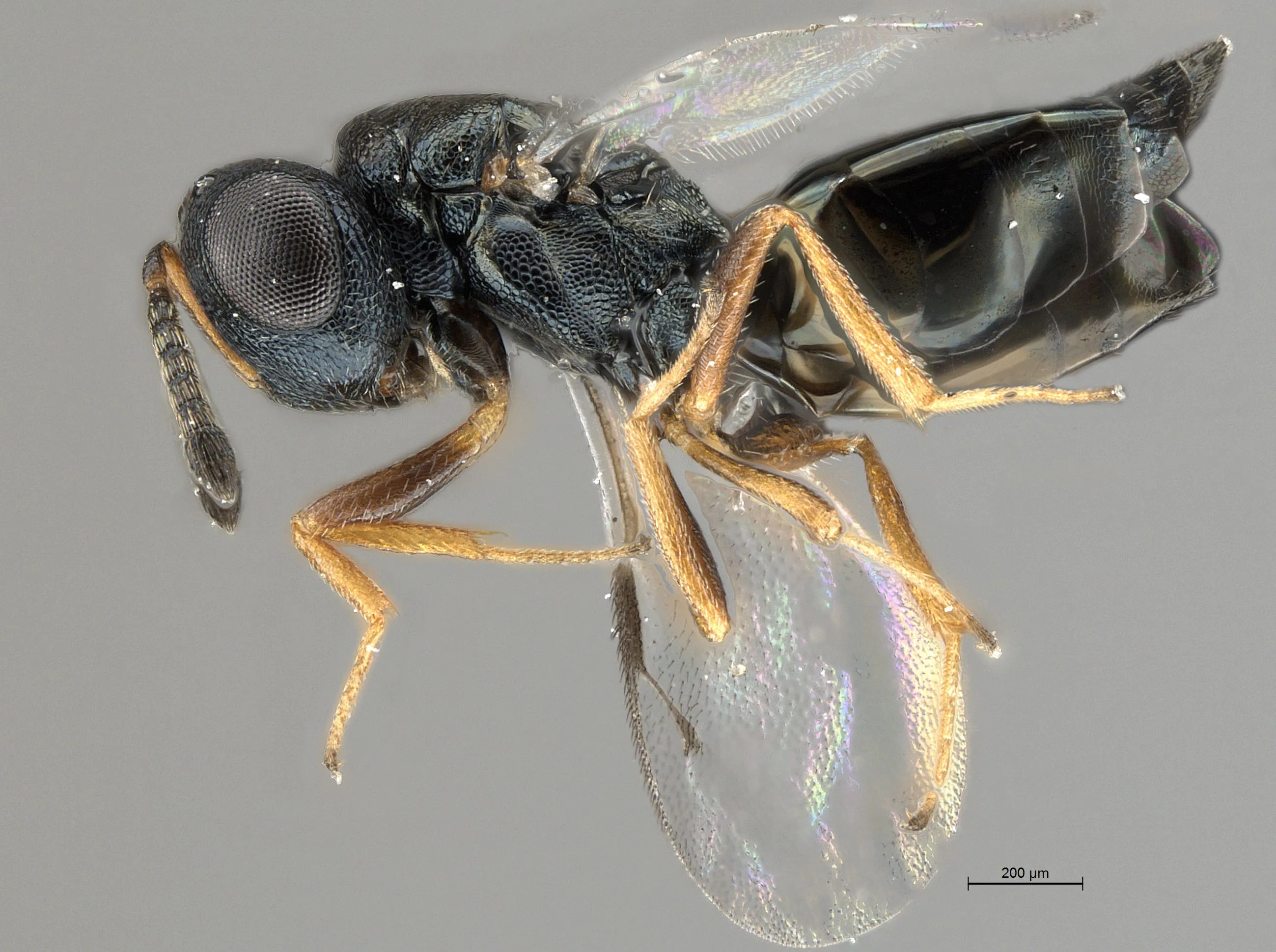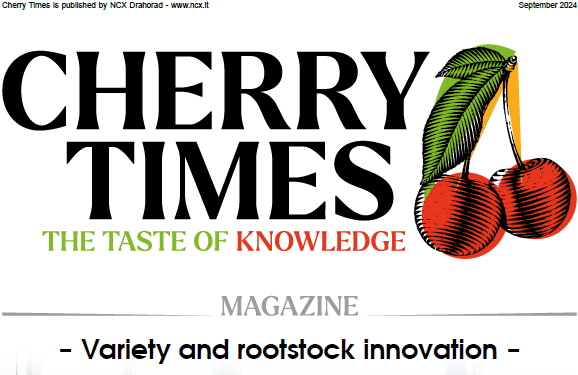The growing demand for low-impact fruit production and the new regulations favoring more sustainable systems have made biostimulants increasingly attractive tools for sweet cherry growers. A recent study conducted in southeastern Spain compared two different biostimulant management programs on sweet cherry, focusing on two commercially relevant varieties, “Nimba” and “Red Pacific”.
The aim was to assess the effectiveness and potential of an organic system versus a conventional one, analyzing their effects on flowering, development, and fruit quality. The organic protocol involved the use of a single certified biostimulant, Lombrico® SET, based on seaweed extracts, amino acids, and plant-derived carbohydrates. The conventional system, on the other hand, relied on three widely used commercial products in sweet cherry cultivation: Maxi-Grow Excel®, Equilibrium®, and Exelgrow®.
Both systems were compared against an untreated control. Biostimulants were applied in twelve treatments during the flowering and ripening stages, under real field conditions, over a 68-day period.

Effects on flowering and ripening
Both systems promoted bud break and improved flowering, accelerating fruit ripening. This effect can be attributed to the presence of natural phytohormones in seaweed extracts, which stimulate key physiological processes such as flower differentiation, growth regulation, and sugar accumulation.
Notably, the organic system showed earlier flowering and ripening, allowing for an earlier harvest, a strategic advantage for growers targeting early markets. From a qualitative perspective, both systems increased the percentage of first-category fruit and reduced the share of non-marketable fruit, leading to higher farm profitability.
The effect was particularly pronounced in the organic system, which increased the proportion of larger, higher-quality fruit while also improving organoleptic parameters such as color, titratable acidity, maturity index, and juiciness.
Compositional benefits
On the compositional side, the study highlighted an increase in major carbohydrates (glucose, fructose, and sorbitol) and in oxalic acid, known for its protective role during the post-harvest phase. Regarding phenolic compounds, the organic system significantly increased levels of chlorogenic acid and naringin in both varieties, compounds valued for their antioxidant and nutraceutical properties.
Of particular interest was the differential response of cyanidin-3-O-rutinoside, which reached higher levels in the organic system for “Red Pacific” but in the conventional system for “Nimba”, underscoring the importance of variety × treatment interactions.
Conclusions and perspectives
In conclusion, the researchers emphasize that the use of biostimulants, both in conventional and organic farming, represents an effective strategy to combine sustainability and productivity. The possibility of advancing ripening and improving fruit organoleptic quality, while at the same time increasing the share of marketable produce, constitutes a tangible economic benefit.
However, the added value of the organic system (Lombrico® SET) is especially relevant in contexts where external inputs are limited or strictly regulated, as in organic cultivation. Looking ahead, validating these results across multiple seasons, varieties, and growing regions will be essential to consolidate the evidence and provide sweet cherry growers with clear guidelines for the targeted use of different biostimulants.
Source: García-Cano, C., Ferrández-Gómez, B., Sánchez-Sánchez, A., Jordá, J. D., & Cerdán, M. (2025). Enhancing of quality, yield and aromatic profile of sweet cherries: comparison between organic and conventional biostimulant systems. BMC Plant Biology, 25(1), 869. https://doi.org/10.1186/s12870-025-06901-3
Image source: SL Fruit Service
Andrea Giovannini
University of Bologna (IT)
Cherry Times - All rights reserved













